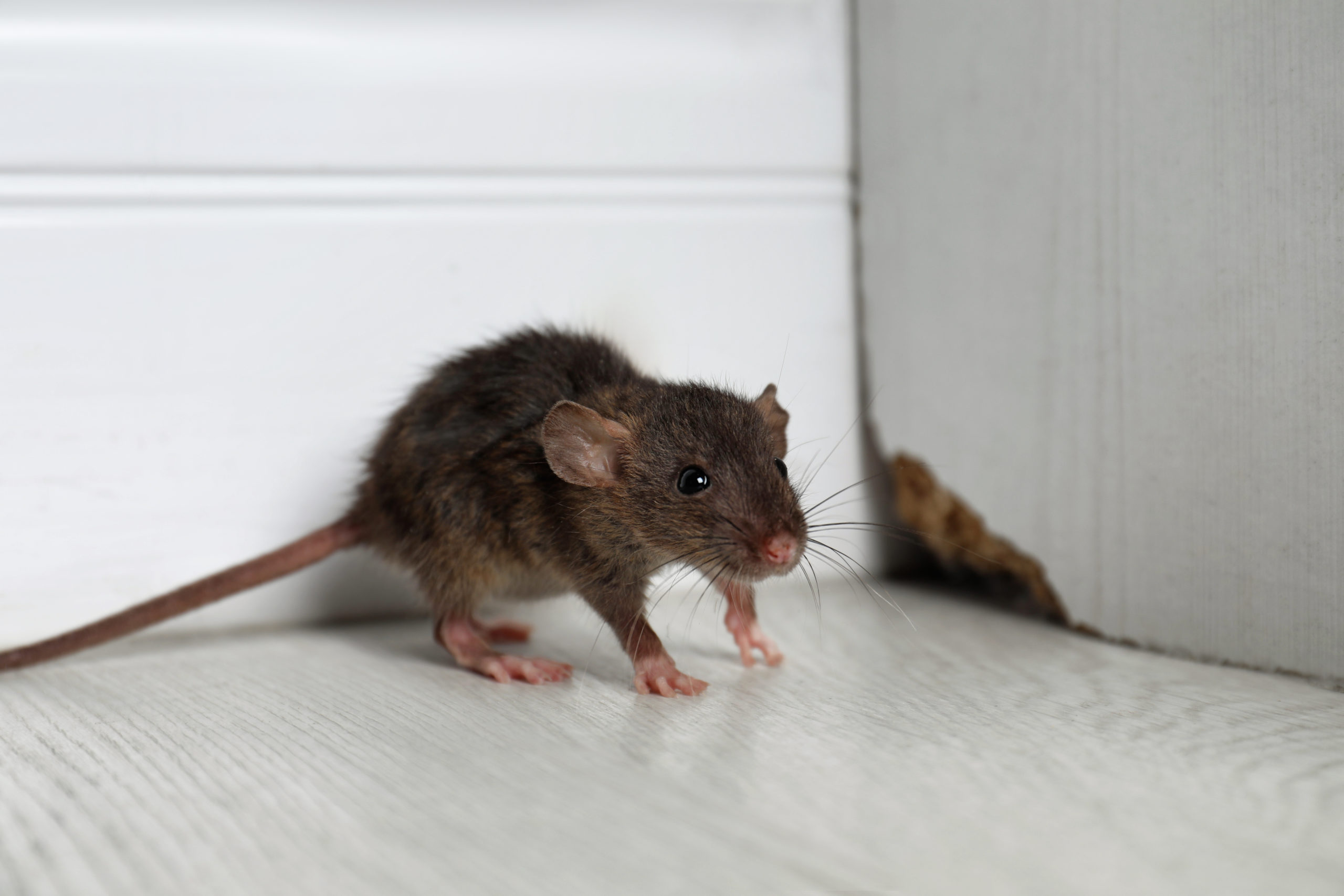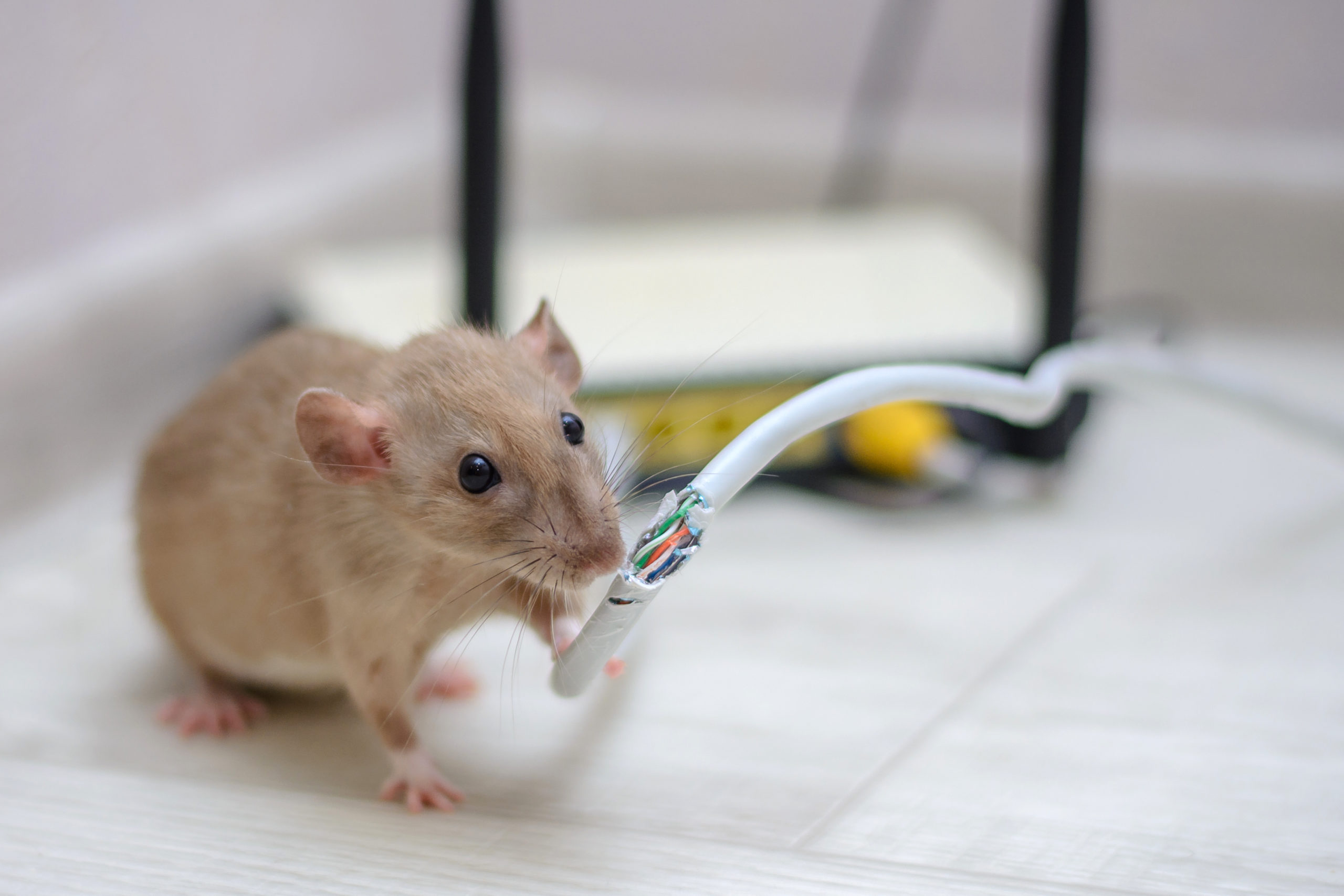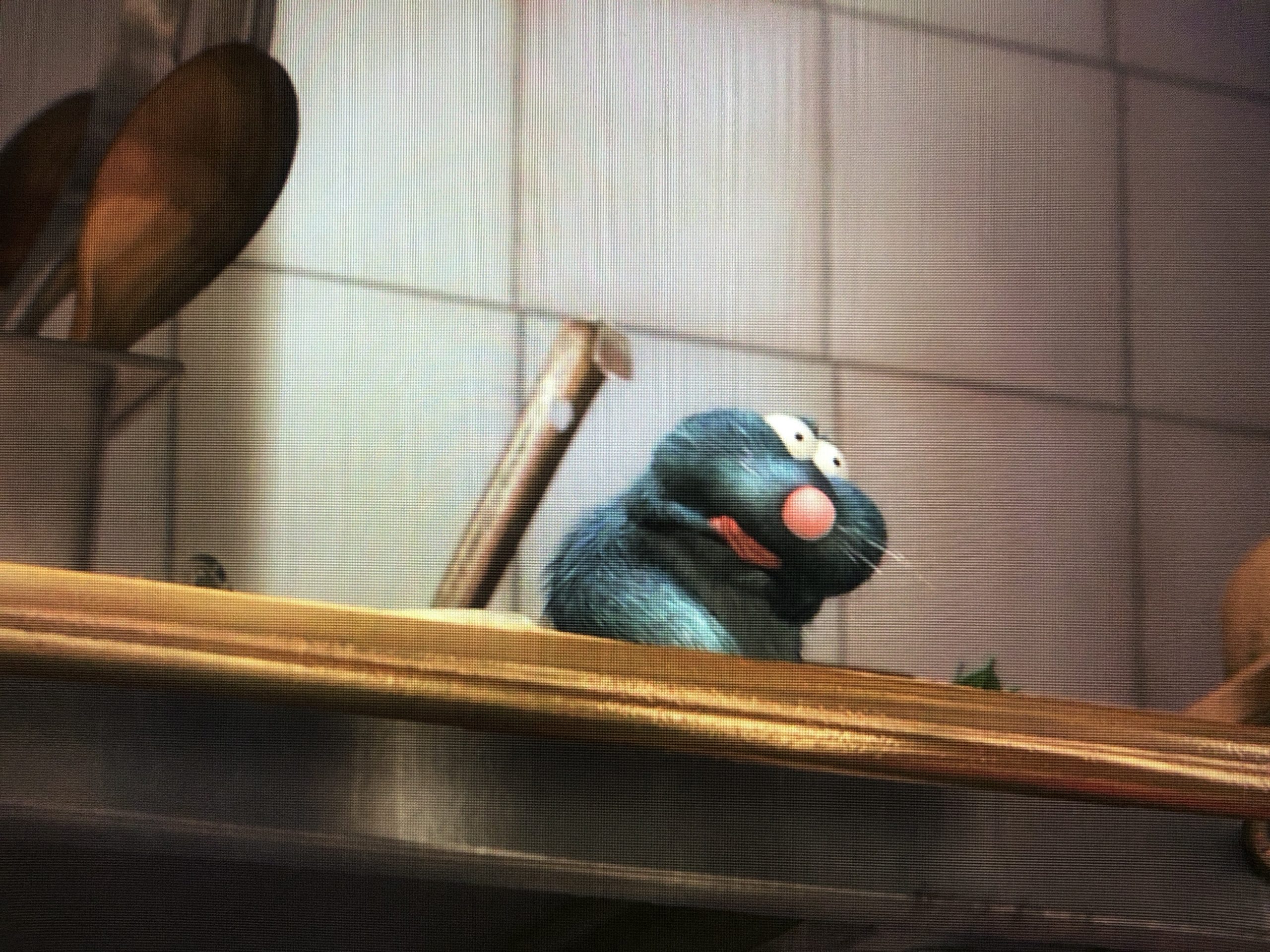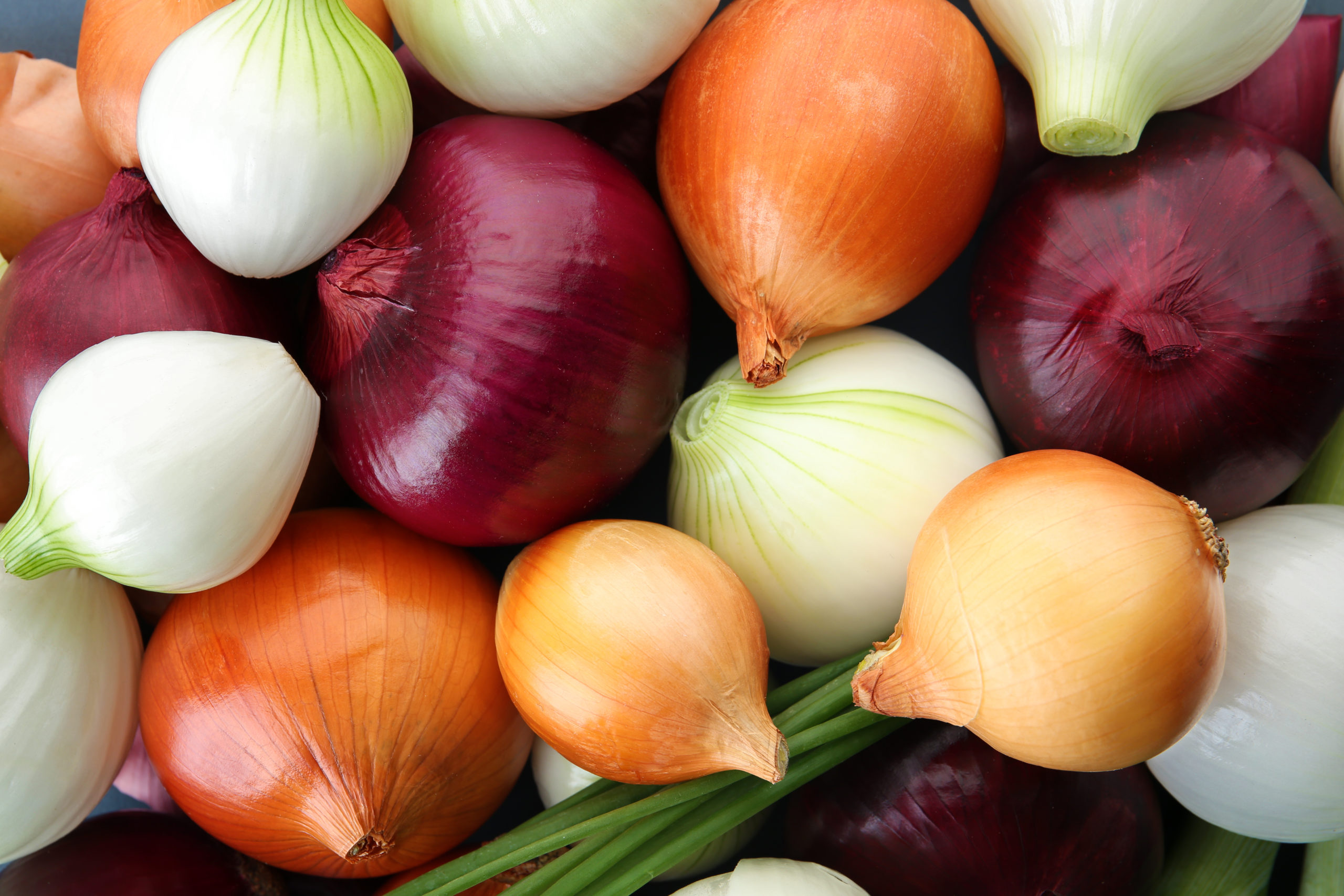The Fascinating Facts and Fallacies of Rats in Ratatouille: Part 1
The Fascinating Facts and Fallacies of Rats in Ratatouille: Part 1
Welcome to part 1 of this mini-series all about the rodent stars of this beloved animated film! While there is a surprising amount of films featuring a rodent as the protagonist – Stuart Little, Flushed Away, The Tale of Despereaux – the Pixar hit Ratatouille may shed the most positive light on rats. This creative take on the classic underdog story showcases the normally disgusting rats as lovable characters that have their own passions and opinions, as the main character Remy achieves his dream of cooking in a real kitchen by controlling the movements of clumsy Linguini to prepare gourmet French dishes. This film is a favorite of many viewers, but how accurate are the rats to the real-life rodents (besides the whole cooking thing)? Let’s take a look at some of the finer details of the movie and how they match up with the infamous pests.
Crawling in Ceilings and Walls

In one of the greatest sequences in the film, where Remy eventually finds his way up to the picturesque view of the nighttime Parisian skyline, he starts out in the sewers and moves up behind the walls and ceilings of various apartments. He also seems to complete this journey with minimal effort through agility and naturally going with the flow of the pipes and crawlspaces. This is predictably accurate to real rats, as they can also make their way through all kinds of tight spaces and hidden areas. They actually prefer to be hidden in general, even though they are nocturnal. The spaces that Remy speeds through are empty spots in between boards and walls, but there are many more obstacles in real walls. Insulation, wiring, beams, and drywall can all get in the way of a clear path. Luckily for the rat, their teeth can break through most materials and their bodies can fit through spaces the size of a quarter. The jaws of a rat are estimated to bite with a force of up to 6,000 pounds per square inch. No wonder Remy had no trouble tasting all of his dishes!
To Gnaw or Not to Gnaw

Speaking of rat teeth, one of the most commonly known facts of a rat is that they have the natural need to constantly chew on something. This is because the roots of their incisors are open, meaning the teeth are always developing as the hard enamel rubs against the soft parts of the tooth. They chisel and chew on their own teeth to keep them sharp, as the teeth would otherwise not be able to chew through any kind of food. All of this fun rat trivia is to say that Remy doesn’t demonstrate this habit once in the film. He acts like a mini-human in many ways, as he is only seen chewing when he is tasting his dishes or eating delicious-looking meals. Although we see his realistic front teeth, it does not seem like he chews or gnaws like a normal rat. The only potential exception is when he acts like an innocent rat and devours a piece of cheese in front of Linguini, but he still seems to be chewing like he usually does. We don’t see Remy gnawing on a twig or random hard materials throughout the film, so this part of Remy’s character makeup is pretty inaccurate.
The Gag-Worthy Soup

Remy humorously gagging at Linguini’s soup!
The image of Remy gagging at Linguini’s disgusting soup mixture has become a classic meme in the world of humorous internet pictures. It is a pretty humorous incident: Remy’s eyes bulging out, his tiny paws covering his mouth when he does so much as pass by the pot of creamy soup. He manages to correct the flavor profile by throwing in a bunch of delectable ingredients, which jumpstarts his culinary career and Linguini’s accidental fame as a supposed star chef. But the whole action that starts this chain of events isn’t even possible in real life because of one simple fact: rats cannot vomit! Scientists have found that rats actually lack the brain circuits needed to engage in this action, as their stomach cannot signal to their brain that something is wrong. The stomach of a rat can’t even move its contents in that way, which is how rat poisons are so effective when they are actually ingested. Since rats are unable to vomit, it is highly unlikely they would be able to gag at the smell of a ghastly soup.
Scallions and Onions, Oh My!

Remy is gifted with naturally knowing how much of each ingredient to throw in a dish, and he prefers to cook with only the freshest ingredients. Salt, pepper, oregano, heavy cream, and butter are often in the rotation for his cooking, but one other ingredient family is also interestingly there: alliums. While a common ingredient in just about every cuisine, onions are very toxic to many rat species. Raw onions in particular will at least make the rats sick, but they usually lead to more fatal results. Some people have found that rats are not harmed by cooked onions, as the toxins are cooked out. The sulfur in onions seems to be the main ingredient that rats are deathly allergic to, so it is a good idea for them to never eat any kind of onion. Even the strong scent of the alliums repel rats, which is an interesting little DIY pest control tidbit for you. With this surprising fact in mind, there is no way that Remy would be able to freely touch and cook with onions in the real world.
For the Good of the Colony

One of the side plots of this movie is how Remy does not fit in with his rat colony, as much as his father wants him to be the next leader. Django is essentially the manager or foreman of the colony, as he directs the rats in where to go and what to gather for their survival. This is pretty accurate to real rats, who don’t have a queen or head ruler like eusocial insects. A rat colony typically has leaders like Django, who may designate tasks or roles to make sure that every part of the nest and food supply is kept up for their best chances at survival. Remy actually acts similarly later by ordering groups of the rats in where to go and what to do in the kitchen to feed the scary food critic, Ego. In the real world, rats each work hard to gather food and nesting supplies when needed. Since rats will eat just about anything, this makes their job of gathering food quite easy. Some rat colonies can even have the amount of members that Remy’s does, which is a terrifying thought when you consider how well they stay hidden in sewers and behind walls.
A Strange Approach to Pest Control

The most action-packed part of the film has to be when Mabel, the elderly woman living in the French countryside, tries to eliminate Remy’s colony by force. There are three stages to her unconventional pest control, all of which are quite intense. The first is the pile of rodent poison sitting outside, which Remy sniffs out and saves his colony from (more on that in the next blog). This is the most common of the three, but her storage method is dangerous. The contents of the poison can seep into the ground over time, killing plants and posing a threat to any animals that search for food in that area. Plus, if the water runoff from the rain storm was bad enough, it could take the poison all the way to the nearest river or other body of water. This would contaminate the drinking water and pollute the general ecosystem. In real life, if you own some form of rodent poison, please make sure to store it in a dry and secure location in the garage. Ensure it is out of reach of children and pets. Don’t be like Mabel with your pest control!
As worrisome as that pile of poison is, Mabel’s other two methods are even worse, which is why they are played for laughs. Her second attempt at eradicating the rat issues is with a shotgun. This is what causes her chandelier to fall from the ceiling and expose the rest of the colony, which is a realistic detail considering how rats hide inside the walls. But trying to shoot rats inside a house is not the best idea in any way, and we recommend never trying this for yourself. Thankfully, all of the cute fictional rats escape her shots and make a run for it. But this introduces phase three of Mabel’s homemade pest control: poisonous gas! She is definitely prepared for all kinds of pest scenarios, which leads us to wonder how she purchased this in the first place. Anyway, Mabel enters the room with a gas mask and a wand dispersing green gas, which would likely give the rats a painful end if they were trapped. But they made their escape to the river and evaded more of Mabel’s shots from the bridge. Realistically, gas for pest control is not used in this way and should be used with much more caution. It is not just waved around without proper protection and preparation, and would not be used while staring down an active rat colony. Today, it is more so used for yard pests in burrows, like squirrels and moles. But even then, many professionals opt for a less-toxic method of pest control, since this gas can do more damage than good.
Pest Control Services Keep the Real Rats Out of the Kitchen!

Make sure to return for part 2, where we dive into 6 more details that either set Remy apart or make him feel like a slightly more appealing version of a true rat! This animated film may be a masterpiece to many people, but real rodents are far less charming than Remy and his colony. They are considered to be the worst pests by quite a few people who have experienced an invasion, and justifiably so. Rats carry dangerous diseases like plague and hantavirus, chew through walls and wiring, and reproduce quicker than you would think possible. Thankfully, pest control services not only treat any present rats and their nests, but also prevent future rats from invading. Our eco-friendly treatments treat any rodent problems without the use of harmful chemicals around your family and pets. Contact us for more information on our services and how we can keep your home free of rodents so that you have a clean kitchen to cook any dish you like. Maybe you’ll even try your hand at ratatouille!
***Disclaimer: Section 107 of the United States Copyright Act recognizes “fair use” copywriter content as such: “Notwithstanding the provisions of sections 106 and 106A, the fair use of a copyrighted work, including such use by reproduction in copies or phono-records or by any other means specified by that section, for proposes such as criticism, comment, news reporting, teaching, scholarship, or research, is not an infringement of copyright.” This blog post may contain certain copyrighted works and characters that were not specifically authorized to be used by the copyrighted holder(s), however, the content on this post qualifies as “commentary” on the copyrighted works under the “fair use” doctrine of the U.S. Copyright Act and is thereby protected by federal law. Furthermore, we do not claim any ownership or creative rights of any characters on this list, and all rights outside of the fair use doctrine belong to the respective owner(s).
Citations
6 reasons why rats are probably the most dangerous household pests around. (2019, October 22). Rocklin Pest Control. Retrieved September 30, 2022, from https://www.rocklinpestcontrol.com/blog/2019/october/6-reasons-why-rats-are-probably-the-most-dangero/
Corrigan, B. (2022, August). Rodent control: Character traits. Pest Control Technology, 50(8), 44-47
EarthKind. (2014, January 22). What can rats chew through?. EarthKind. Available at https://www.earthkind.com/blog/what-surprising-things-can-a-rat-chew-through/ (Accessed on September 30, 2022).
Hitchcock, K. (2022, July 27). Can rats eat onions? What you need to know!. PetKeen. Available at https://petkeen.com/can-rats-eat-onions/ (Accessed on September 30, 2022).
Nuwer, R. (2013, April 18). Why rodents can’t throw up, in case you were wondering. Smithsonian Magazine. Available at https://www.smithsonianmag.com/smart-news/why-rodents-cant-throw-up-in-case-you-were-wondering-25707720/ (Accessed on September 30, 2022).
The dangers of using rat poison. (2020, January 14). Automatic Trap. Retrieved September 30, 2022, from https://www.automatictrap.com/blogs/news/the-dangers-of-using-rat-poison
Wisel, C. (2021, September 29). We asked science if rats can actually cook like in ‘Ratatouille’ and it said no but we kept pushing anyway. Eater. Available at https://www.eater.com/22697108/can-rats-cook-like-ratatouille (Accessed on September 30, 2022).

